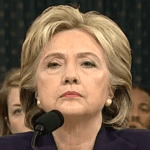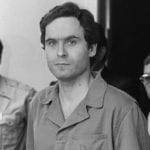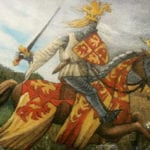 Weird Stuff
Weird Stuff  Weird Stuff
Weird Stuff  Mysteries
Mysteries 10 Tragic Disappearances and Deaths in Joshua Tree National Park
 History
History 10 Ways Childhood Really Sucked in the Old West
 Music
Music 10 Name Origins of Famous Bands from the 1990s
 Religion
Religion 10 Biggest Turnarounds by the Catholic Church
 Weird Stuff
Weird Stuff 10 Unbelievable Times Laws Had Unintended Consequences
 Humans
Humans Ten Historic Women Who Deserve Way More Credit Than They Got
 Movies and TV
Movies and TV 10 Films That Spawned Major Lawsuits
 History
History Ten Times Towns Were Wiped Off the Face of the Earth
 Creepy
Creepy 10 of the Most Disturbingly Haunted Public Houses in the UK
 Weird Stuff
Weird Stuff 10 Niche Subcultures That Are More Popular Than You Might Think
 Mysteries
Mysteries 10 Tragic Disappearances and Deaths in Joshua Tree National Park
 History
History 10 Ways Childhood Really Sucked in the Old West
Who's Behind Listverse?

Jamie Frater
Head Editor
Jamie founded Listverse due to an insatiable desire to share fascinating, obscure, and bizarre facts. He has been a guest speaker on numerous national radio and television stations and is a five time published author.
More About Us Music
Music 10 Name Origins of Famous Bands from the 1990s
 Religion
Religion 10 Biggest Turnarounds by the Catholic Church
 Weird Stuff
Weird Stuff 10 Unbelievable Times Laws Had Unintended Consequences
 Humans
Humans Ten Historic Women Who Deserve Way More Credit Than They Got
 Movies and TV
Movies and TV 10 Films That Spawned Major Lawsuits
 History
History Ten Times Towns Were Wiped Off the Face of the Earth
 Creepy
Creepy 10 of the Most Disturbingly Haunted Public Houses in the UK
10 Sinister Stories About Britain’s Creepiest Conspiracy Theory
In 1981, a waterlogged body was pulled out of the River Arun, in a sleepy part of the Sussex countryside. Local investigators initially suspected a crime of passion over a doomed affair. But the murder soon proved to have a connection to the murky world of espionage, revealing an intertwined pair of sinister conspiracies, linked in the unlikely figure of Colin Wallace.
10Cadet Wallace
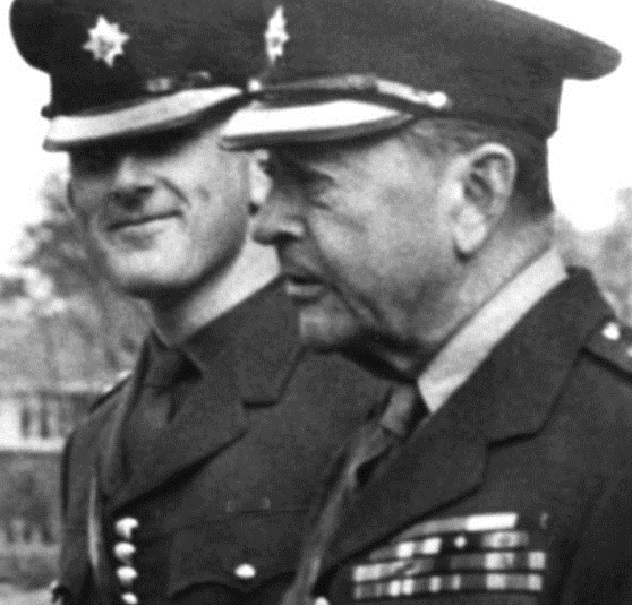
The son of an RAF pilot who died of terrible war wounds in 1946, Colin Wallace (left in the photo above) was born into a fiercely loyalist Ulster Protestant family and grew up obsessed with the British military. From his school cadet unit, he moved onto the reserve Territorial Army, then the paramilitary Ulster Special Constabulary, before finally joining the regular army in the late ‘60s.
In 1969, the army was deployed to deal with the worsening situation in Northern Ireland. As a local boy, Wallace was appointed to headquarters as an information officer, charged with dealing with the local media, and quickly rose through the ranks. One of his commanding officers told writer Paul Foot that he took “no leave for six years and worked 80 hours a week. He was relied on because he had a knowledge of the Irish situation which was unique in headquarters and surpassed that even of most of the intelligence branch.”
By the age of 29, Wallace was the youngest lieutenant-colonel in the British Army. And his work ethic and media skills didn’t go unnoticed. In the early 1970s, the army, working closely with MI6, decided to set up a secret psychological warfare group known as the Information Policy Unit. Wallace was tapped to head up propaganda operations for the unit. He was about to enter the dangerous world of espionage.
9The Satanic Panic

Most of Wallace’s work at Information Policy involved manipulating the media in an attempt to undermine support for both loyalist and republican paramilitaries. For example, planted stories might imply that a particular paramilitary had links to communism or was a front for drug-dealing. But the unit’s most bizarre operation was probably the time they started faking Satanic rituals.
From around 1972 until 1974, Wallace and Information Policy left evidence of “black magic” rites scattered across abandoned buildings in Belfast, Newry, and Islandmagee. These included black candles, inverted crucifixes, and pentacles. Wallace then planted lurid stories in the press linking Satanism to the violence present in Northern Ireland at the time. The hope was to convince people that the paramilitaries had awoken evil forces. A secondary goal was to scare local youths enough to keep them from going out at night. Thanks to movies like The Exorcist, demons and black magic were popular topics in the press and a mini–Satanic Panic soon spread across the country.
In an interview with the sociologist Richard Jenkins, Wallace explained that “the idea was to try to get local people to talk about it in the hope that the fact that sites had been found would generate rumor and give the impression that it was much more widespread than it was . . . we never did anything that was particularly detailed, just left clues that would get people guessing.” The resulting hysteria was more than he could have hoped for.
Of course, faking Satanism was all in a day’s work for Wallace, who had a knack for the sort of outlandish stories beloved by the tabloid press. One of his most famous stories claimed that female IRA volunteers were smuggling explosives under their clothes, only to be killed due to the buildup of static electricity in their nylon underwear. The Daily Mirror, then the most popular paper in Britain, carried it under the headline “Danger In Those Frilly Panties.”
8The Cowboys Arrive

According to Fred Holroyd, another army intelligence officer in Northern Ireland, the situation took a turn for the worse in the early 1970s, when MI5 arrived in the province. Previously, intelligence-gathering in the region had been the responsibility of MI6, Britain’s overseas spy agency, rather than MI5, its domestic equivalent. In Holroyd’s version of events, MI6 was running a lot of bungled operations (Holroyd’s first cover was blown before he even got to Ireland, when an announcement on the ferry asked for “Captain Holroyd”), but essentially focused on information gathering. MI5, although no more competent, was much more aggressive, adopting a strategy of blackmail, intimidation, and violence. These different approaches soon sparked a turf war between the rival agencies and MI5 took full responsibility for Northern Ireland starting in 1973.
Holroyd might be too kind to MI6, which was soon embarrassed by evidence that two of its agents had robbed a Dublin bank. And some of his more shocking allegations have never been proven, including the suggestion that British officer Robert Nairac was illegally orchestrating loyalist death squads. (Nairac was himself assassinated in 1977.) But there is evidence that British intelligence services adopted a more aggressive approach around the time MI5 appeared on the scene. Previously, it had been accepted that a political solution would have to be found that could accommodate both Catholics and Protestants. But now it seemed an “us vs them” approach would predominate.
Holroyd’s career came to a strange end in 1975, when he was abruptly removed from his position and ordered out of Northern Ireland. It’s often said that he was thrown into a mental hospital, but this is an exaggeration. Instead, he was ordered to undergo mandatory psychiatric counseling at an army base in Hampshire. The official reason for his removal was that he had suffered a breakdown and threatened his wife with a secret gun, after which a doctor told the army that he was mentally unstable. Both his wife and the doctor in question later denied that this had ever happened. He left the army shortly afterward and eventually went public with allegations that he had been forced out by “cowboys” in army intelligence and MI5, who disliked his ties to MI6 and probes into their activities.
7Clockwork Orange
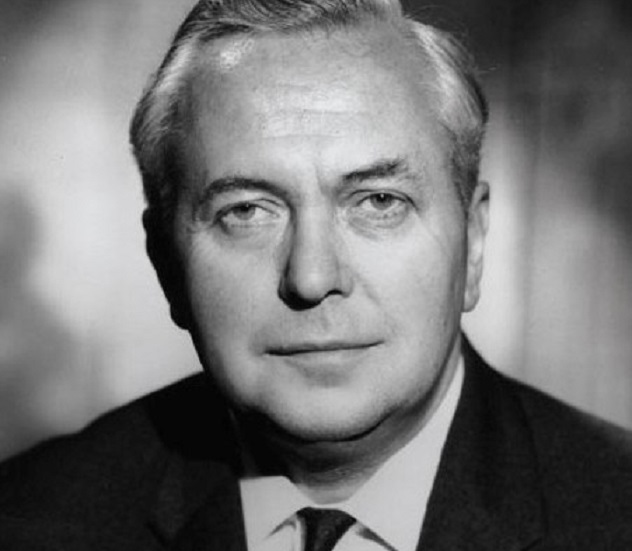
But while the army and MI5 were adopting a hard line, it seemed that the politicians back in London weren’t quite on the same page. In 1972 and 1973, former and future Labour party prime minister Harold Wilson (pictured above) and a senior Conservative party minister both met with IRA leaders in Dublin. This outraged the Northern Irish intelligence community, including Colin Wallace, who soon became part of one of the most notorious secret plots in British history: Operation Clockwork Orange.
As we have seen, Wallace and the Information Policy Unit had become adept at manipulating the media and planting false stories. Now, feeling betrayed by both Labour and the Conservatives, elements of the intelligence community apparently realized they could use those same skills against their political masters. According to Wallace, these rogue spies soon conceived of a plan dubbed Operation Clockwork Orange, which was aimed at influencing the British electorate toward a hardline Conservative government.
To this end, Wallace claims that smears were launched against both the Labour party and the moderates then dominating the Conservative party. Rumors were spread that Conservative prime minister Edward Heath was gay and that Harold Wilson was a Soviet agent who had assassinated his predecessor. False pamphlets outlining plans for a socialist revolution were created and attributed to senior Labour figures. When loyalist leader Ian Paisley proved himself willing to work with Wilson’s Labour party, Wallace created false bank accounts implying he was guilty of corruption. He also planted stories alleging that Liberal party leader Jeremy Thorpe was gay, although this was eventually proven spectacularly true when Thorpe was arrested for trying to have his lover assassinated.
Exactly how far Clockwork Orange went is unclear. Harold Wilson surprised everyone by resigning as prime minister in 1976 and soon told reporters he believed the security services were plotting a coup against him. Former MI5 agent Peter Wright made similar allegations in his book Spycatcher, but the general consensus is that no plan to violently overthrow Wilson existed beyond some idle talk. In any case, Wallace said that he gradually began to question the morality of undermining the British government. In 1974, he informed his co-conspirators that he was no longer willing to work on Clockwork Orange. That was arguably the beginning of the end for him. But there were even darker things going on in Northern Ireland.
6Kincora
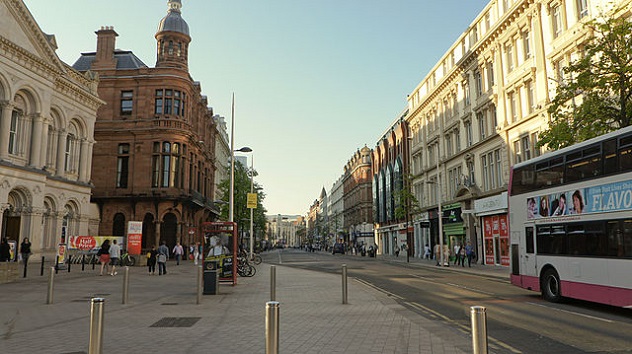
In late 1972, Wallace says that he was asked to meet with a woman, either a welfare officer or a probation officer, who had suspicions that children were being systematically abused at the Kincora Boys’ Home in Belfast. Army intelligence was interested in the home because its “housefather” was William McGrath, the leader of a loyalist Protestant paramilitary organization called Tara. Detectives with the Royal Ulster Constabulary were aware of the abuse allegations but had been blocked from launching an investigation by their superiors.
For Wallace, the information seemed like the perfect opportunity to discredit a dangerous fanatic like McGrath, and he began making plans to leak it to the press. In 1973, he did actually release a paper outlining the allegations, which several journalists recall receiving from him at the time. However, most papers did not print the information. (Perhaps Wallace had planted too many false stories to be considered reliable by that point.) Meanwhile, he found his attempts to further publicize the case stymied by MI5.
It has been widely suggested that MI5 knew about the abuse and was using the information to blackmail McGrath into becoming an informant. Fred Holroyd’s superiors assured him that the “Tara organization was in effect controlled by British intelligence, and was not a real security threat.” An MI5 officer named Brian Gemmell says that he was ordered not to investigate McGrath or Kincora. Wallace later told the Belfast Telegraph that “the army did want to expose Kincora but MI5 didn’t. That led me to the conclusion that MI5 had some extra interest.”
Even though documents prove that the army and police had credible information that children were being sexually abused at Kincora during the early ‘70s, nothing was done until 1980, when an investigation by the Irish Independent exposed the scandal. McGrath and two other staff members were jailed in 1981. Back in 1974, a month after supposedly backing out of Clockwork Orange, Wallace wrote a memo demanding police action over Kincora.
5Burning Colin
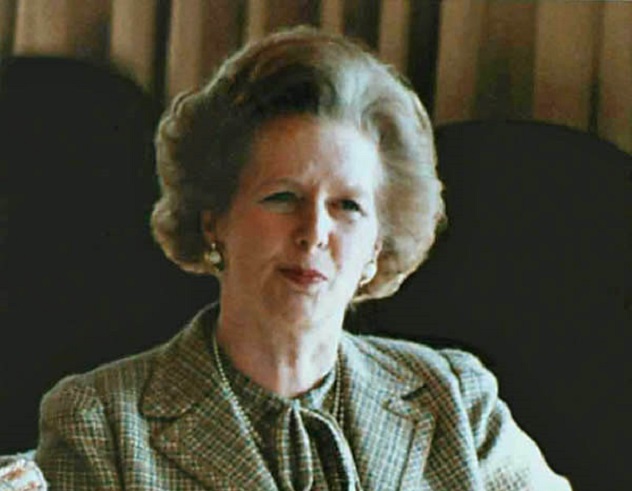
Just a few weeks after writing the Kincora memo, Wallace was suddenly reassigned away from Northern Ireland, ostensibly because his “life was in danger.” A short time later, he was informed that he was being fired from his job as a government information officer for illegally passing a document to Robert Fisk, the Times correspondent in Belfast. The man who had been the youngest lieutenant-colonel in the British Army was unceremoniously removed from government service.
Of course, the charge was ridiculous. Wallace’s whole job with the Information Policy Unit involved passing information to journalists, and he had significant discretion in choosing when to do so. But because his work was clandestine, his official job description did not give him this authority. Wallace insisted that he had a second, classified job description, but the Ministry of Defense denied this. It also denied that Wallace was involved in propaganda work or that a black propaganda program even existed. Unfortunately for the government, this was all untrue and provably so.
In 1990, the government of Margaret Thatcher had to admit that the public had been deceived about Wallace’s role. Armed Forces Minister Archie Hamilton told parliament that Wallace’s job included “responsibilities for providing unattributable covert briefings to the press; and it was stated that the incumbent would be required to make on-the-spot decisions on matters of national security during such interviews.” Hamilton did argue that Wallace had lost this discretion when he was transferred out of Ireland, but the dismissal was overturned and Wallace was awarded financial compensation. It was 15 years too late.
4Airey Neave
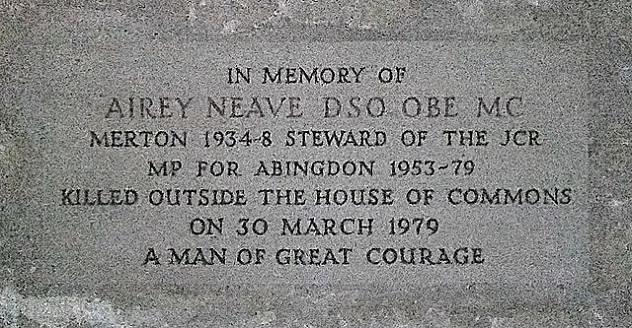
After his dismissal, Wallace moved to the sleepy market town of Arundel in Sussex, where he took a job as an information officer with the local council. His assistant was Jane Lewis, the wife of a local antiques dealer, and the two became close while overseeing an episode of the popular BBC game show It’s A Knockout, which was being filmed in the area. But he didn’t entirely leave politics behind, meeting on several occasions with Airey Neave, a close ally of Margaret Thatcher famous for his daring escape from Colditz Castle during World War II. According to Wallace, he agreed to write some speeches for Neave emphasizing the Labour party’s links to the IRA.
Neave was assassinated by the Irish National Liberation Army (INLA) in 1979 and has since become something of a magnet for conspiracy theories. Irish investigative journalist Kevin Cahill claims that Thatcher intended to make Neave head of the security services, with a brief to weed out corruption. According to Cahill, his death was an inside job carried out by the British spies that Neave intended to prosecute. But no conspiracy theorist has satisfactorily explained why the INLA would take responsibility for a crime they didn’t commit. The INLA had the motive, opportunity, and ability to kill Neave, and there’s really no reason to suspect anything more complicated than that. However, the link to Neave indicates that Wallace hadn’t simply retired peacefully to the country. He was still a very dangerous man, one way or another.
3The Murder
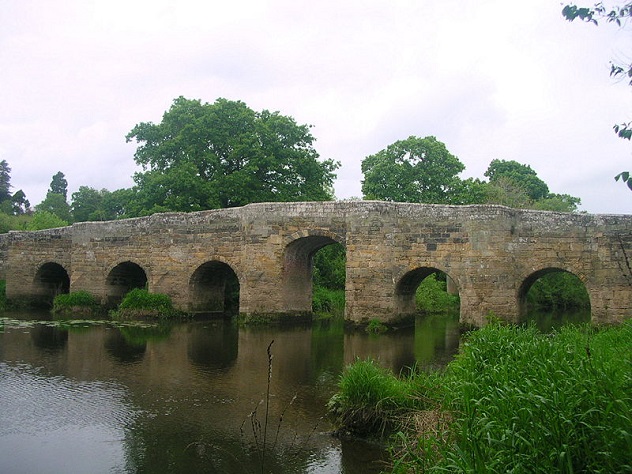
In 1981, Wallace agreed to meet Jonathan Lewis, the husband of his assistant Jane, before a party they were scheduled to attend in Arundel. Wallace had become extremely close to Jane, forming a relationship which was “amorous but not adulterous,” and Jonathan Lewis had apparently confronted him about it over the phone. Later that night, Wallace attended the party, telling Jane that her husband was running late. Jonathan Lewis’s corpse was pulled out of the River Arun the next day.
The police declared that Lewis had been knocked unconscious by a vicious “karate blow” and then thrown into the river, where he drowned. They quickly placed Wallace under arrest, and he was convicted of manslaughter and sentenced to 10 years in prison later that year. The case gained significant press attention, in part because Jane Lewis and Wallace had been working on the It’s A Knockout game show at the time of the murder. But the case soon took a twist, as Wallace insisted that he had been framed by the security services in order to silence him. For the first time, he began to speak openly to journalists about Clockwork Orange and Kincora.
The official response was to dismiss Wallace as a fantasist, but this was complicated by a treasure trove of documents he had squirreled away from his army days, which demonstrated that the army and police had at least some knowledge of Kincora. By this point, McGrath had been arrested and the British government was extremely worried that a connection with the security services might emerge. Shortly after Wallace was arrested, a memo to Sir Frank Cooper, the most senior civil servant at the Ministry of Defense, warned that Wallace had the means and motivation to expose the Kincora scandal. Wallace proceeded to do just that.
He was paroled in 1986, still insisting he had been framed by sinister forces. In 1996, a British judge overturned his conviction, ruling that the original jury had been shown pictures of Wallace in an SAS uniform, wrongly creating the impression that he had received training in unarmed combat. A pathologist cast doubt on the “karate blow” scenario. The journalist Paul Foot claimed to have uncovered evidence that Sussex police deliberately ignored a witness exonerating Wallace. In a speech to parliament, Ken Livingstone, the future mayor of London, claimed that other irregularities in the trial included “press conferences given by police officers during the trial concerning Wallace’s activities in Ireland; interviews between journalists and jurors during the trial; statements written by two Sussex officers which contained identical sections; and the failure to follow up important new evidence capable of proving Wallace’s innocence.” With the conviction quashed, the murder of Lewis is currently considered unsolved.
2A Conspiracy?
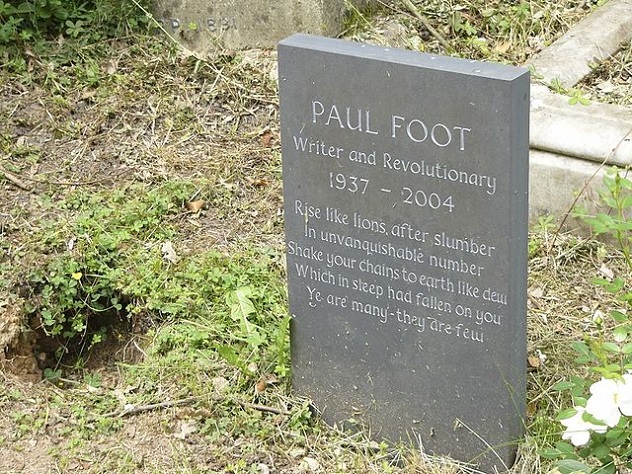
So was Wallace framed? The question divided two of Britain’s most prominent investigative journalists. In his book Who Framed Colin Wallace?, the legendary Paul Foot strongly argued that the security services had orchestrated the charges to discredit their rogue operative. Foot repeatedly visited Wallace in prison and became his most important advocate, describing a process where Wallace’s allegations would “be denied or ridiculed. I would go back to Wallace, who would provide documents to prove what he had said.”
The other key journalist to investigate the Wallace case was Duncan Campbell, who later became famous when his documentary about the Zircon spy satellite program triggered a police raid on the BBC. Campbell’s reporting on security matters was so penetrative that an official letter exists from the head of MI5 suggesting that he should be incarcerated. Like Foot, Campbell helped to publicize and substantiate Wallace’s portrait of the out-of-control Northern Irish security services. Unlike Foot, Campbell thought the claims of a frame-up were nonsense.
In an article for the New Statesman, Campbell pokes several holes in the conspiracy theory pushed by Foot and Wallace. For starters, if MI5 wanted to silence Wallace, why not just kill him instead of Lewis? Foot wrote that this would have aroused suspicion, but Campbell points out that Wallace had yet to go public with his allegations in 1981. So why would his death be suspicious? More to the point, after his arrest, Wallace was free to correspond with Foot and Campbell from prison, revealing what he knew. If his arrest was supposed to silence him, it was perhaps the worst plan in history.
Another scenario claims that Lewis’s death was unrelated to MI5, but they still took the chance to frame Wallace, perhaps figuring that he would reveal what he knew anyway, so at least a jail term might discredit him. This is the scenario Wallace prefers, since he apparently believes Lewis was killed by criminal antique dealers from Brighton. But there’s really no evidence for it, since mistakes in the trial are easily attributable to incompetence rather than conspiracy. Ultimately, it may not really matter. As Campbell put it: “I believe many of his allegations about Northern Ireland—and I also believe he may very well have killed Lewis.”
1The Westminster Connection
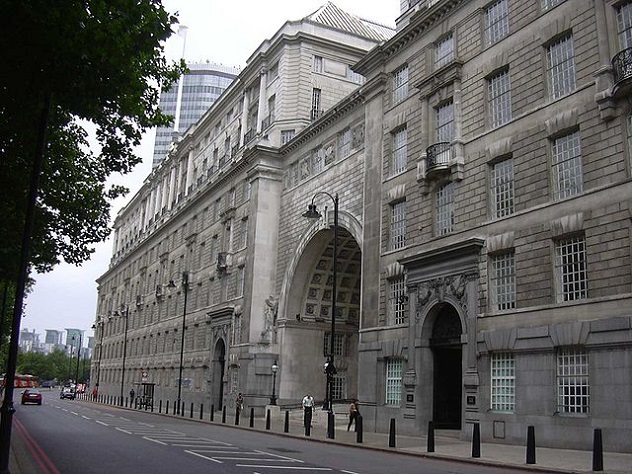
Recently, there has been considerable speculation about a pedophile ring operating at the highest level of the UK government in the not-too-distant past. Terrifyingly, there seems to be some truth in this. The deceased Liberal MP Cyril Smith repeatedly raped young boys and blocked attempts to investigate him, and similar allegations have been made about former Labour MP Lord Janner. Scotland Yard says they believe a witness code-named “Nick,” who says he was abused by senior politicians 30 years ago, is credible. “Nick” also says the pedophile ring in question killed at least three children. Scotland Yard believes that, too.
These allegations have renewed interest in the Kincora Boys’ Home, with Wallace alleging that residents were taken to England to be abused. He also claims that Sir Knox Cunningham, former private secretary to Prime Minister Harold MacMillan, was a regular visitor to the home. Former resident Clint Massey, who was sexually abused by McGrath and others, told the Independent that “there were loads of people over from London. I have always assumed they were senior figures from Whitehall. I certainly heard English accents.” Fellow Kincora resident Richard Kerr claims he was taken to London, where he was molested by “powerful people.”
After the Irish Independent broke the Kincora scandal, a number of inquiries were held (one of them headed by Sussex police chief Sir George Terry, who also oversaw Wallace’s murder arrest). However, these were all structured “to avoid the question of the intelligence services,” leading Duncan Campbell to conclude that the inquiries failed to discover a conspiracy because they were “told not to ask the right questions.” But now there are calls for a new inquiry, specifically to look at the role of intelligence agencies. Wallace, now 71, has sworn to testify.
After everything that’s happened, it might not be too late to get justice for the children abused at Kincora. Earlier this year, Channel 4 News arranged a meeting between Richard Kerr and the intelligence officer Brian Gemmell, who was blocked from investigating Kincora by MI5. Speaking to Kerr, Gemmell could only offer his apologies. “That’s the thing that hits me—that if I really pushed the thing through in ’75–’76, you could have been rescued. I’m sorry.”
Alex is the only freelance writer with a Twitter account.
